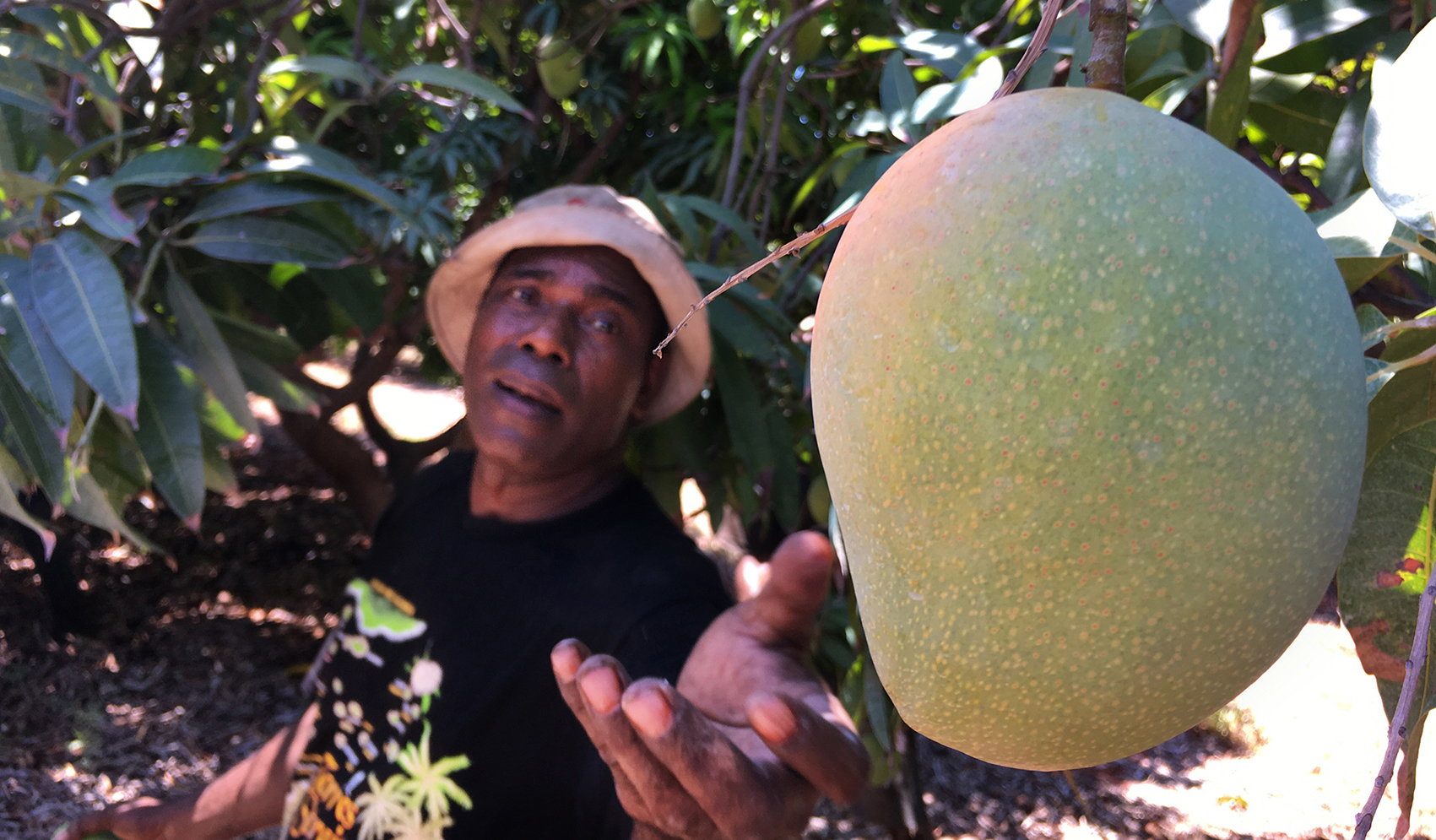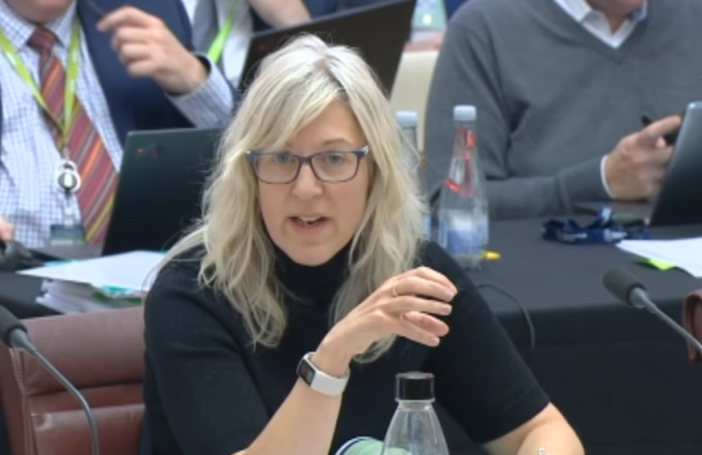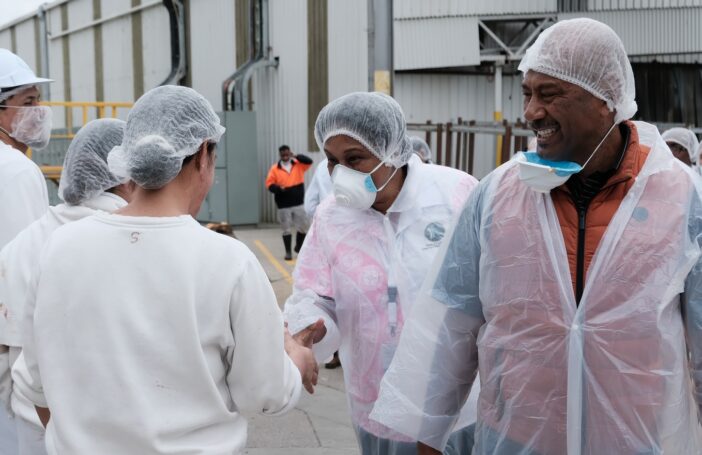Evidence over nine months to the end of February 2024 shows a declining demand for Pacific Australia Labour Mobility (PALM) scheme seasonal workers — those who used to be under the Seasonal Worker Programme (SWP), now absorbed into the PALM scheme as short-term PALM workers.
Figure 1 shows the monthly numbers of short-term PALM workers in agriculture and of all PALM workers in agriculture, between 30 June 2023 and 29 February 2024. (Now, under PALM, workers can be hired in agriculture on a multi-year, non-seasonal basis.)
Figure 1: Number of short-term PALM (SWP) workers and all PALM workers in agriculture
Source: PALM Factsheet Expanding and improving the PALM scheme – June 2023 to February 2024.
The graph shows a decline of 10.2 per cent in short-term workers and 10.4 per cent for all PALM workers in agriculture. The latter figure reflects the sharper decline in long-term PALM workers in agriculture of 13.3 per cent, from 2,298 to 1,993. These declines are especially surprising because summer is the peak period for hiring agricultural workers.
Two factors are likely to be important in explaining this recent fall in PALM agricultural worker numbers: the growing number of backpackers seeking work in rural areas, and the new and more stringent PALM Deed of Agreement required for approved employers.
Working holiday maker (WHM) visa holders, more commonly known as backpackers, are the main alternative source of labour for growers to engage at harvest time. They are less expensive to employ because they are responsible for their own travel and accommodation costs. Official statistics for the period after Australia’s international border re-opened show that first-visa backpacker numbers have more than doubled to 175,599 in the 12 months to the end of the financial year 2022-23. The number of first-visa holders has continued to grow in the six months to the end of 2023, reaching 99,497 for the half-year.
There are also many more second- and third-year visa holders, that is, backpackers who have completed three months’ work in a rural area in their first year (to get a second-year visa) or six months in their second year (to get a third-year visa). In the financial year 2021-22, the number of these visa holders was only 11,643. But in the next 12 months to end June 2023, their number had risen to 26,421, and in the six months to end December 2023, their number has increased even more to 22,881. Projecting forward for the whole 12 months to the end of June 2024, the number of second- and third-year visa holders — extra temporary workers in regional areas – could reach nearly 46,000.
These statistics need to be adjusted to reflect the proportion of backpackers in rural areas working in agriculture. This has been declining owing to changes in government policy that have made other types of regional work eligible for visa extension. The details are provided at the end of this post, but I estimate that the number of backpackers working in agriculture in 2023-24 would be just over 25,000 (Figure 2).
Figure 2: Second and third-year backpackers working in agriculture vs short-term PALM (SWP) workers, 2012-13 to 2023-24 (estimated)
Source: Department of Home Affairs, 2024, Working Holiday Maker visas granted pivot table at 31 December 2023 and PALM Factsheet Expanding and improving the PALM scheme February 2024.
Note: The projected data for backpackers for 2023-24 are based on the first six months of the year. The data for short-term PALM (SWP) workers is based on the number engaged as recorded on 29 February 2024.
The large increase in backpacker numbers (first, second and third-year visa holders) certainly suggests that these workers are replacing short- and long-term PALM workers.
The Australian government in June 2023 changed the PALM Deed of Agreement that employers must sign. A major change was to introduce a net minimum pay guarantee for every short-term PALM worker of 30 hours of work a week. From January to June 2024, this can be averaged over four weeks, but not after that.
In late 2023, the Approved Employers Association (AEA) and the Australian Fresh Produce Alliance (AFPA) surveyed larger labour hire firms and direct employers to ask them about the impact of the net minimum pay guarantee on future recruitments. In response, these SWP employers said they expected a reduced demand for short-term PALM workers of between 17 to 25 per cent, to manage the new financial risk and loss of flexibility.
By contrast to the decline in demand for agricultural workers, the number of long-term PALM workers not in agriculture over the same nine-month period shows a significant rise from 11,292 to 12,747 workers, an increase of 12.9 per cent. This confirms the problem that PALM has in agriculture.
This is not only bad for the Pacific, but it will also increase worker exploitation, since it has been well documented (here and here) that exploitation rates are higher among the lightly regulated backpackers than among the closely monitored PALM workers.
Data note on backpackers working in agriculture
To assess the backpacker threat to future demand for PALM workers, the statistics on second- and third-year backpackers need to be adjusted to reflect the proportion of backpackers in rural areas who are also working in agriculture. The proportion of second- and third-year backpackers working in agriculture has declined from 94 per cent in 2017-18 to 76 per cent during the years 2019-20 and 2020-21 when international borders closed. The share of backpackers working in agriculture decreased further in the subsequent year, falling to 55 per cent in 2022-23.
This declining share of backpackers working in agriculture is in large part due to the expanded categories of “specified work” since July 2019 required for eligibility for a further visa. Beginning in July 2019, the Department of Home Affairs announced that the new eligible work areas included bushfire recovery work undertaken in a declared disaster area. From 4 April 2020, “specified work” was expanded to include working in critical sectors supporting Australia’s COVID-19 response. These were named specifically as agriculture, food processing, health, aged or disability care and childcare. Backpackers were also permitted to remain with the same employer in these sectors for up to 12 months, instead of six months as previously required. Work in tourism and hospitality in “northern, remote or very remote Australia only” was also added during the international border closure period and was still applicable in June 2023.
The number of second- and third-year visa holders working in agriculture in 2022-23 was 14,497 and for the six months to the end of December 2023 is expected to be 12,585, based on the same assumed share (55 per cent) of second- and third-year visa holders working in agriculture. On a 12-month projected basis, the number of backpackers working in agriculture in 2023-24 would be just over 25,000.
Postscript (21/6/2024): The government announced at the end of May that it has abandoned its plan to require approved employers to pay workers for at least 30 hours a week. Instead the existing arrangement whereby employers have to pay a minimum of 120 hours per four weeks – which was due to end 30 June – will remain in place for (at least) another year.







I’m very much interested to join the Pacific Seasonal Workers Program. Can someone help me?
Kind Regards
I suggest you contact your government’s Department of Labour or Employment Sending Unit to get the information on how to apply to work in Australia or New Zealand. However, it is up to the approved employer to choose the workers based on his or her understanding of the type of worker they need.
Dear Sir,
Currently, there are how many PNG seasonal workers in Australia today?
Unfortunately the government has not released up to date information.
Dan,
Many thanks for your feedback on my blog. It is important for readers to know that you are speaking from your experience as a major licensed recruiter of ni-Vanuatu seasonal workers to Australia. However, we need to note the differences between the two data sources. You are reporting from your recent knowledge of seasonal worker recruitment numbers for Vanuatu. My blog reports (1) the data on worker numbers only up to the end of February 2024 and (2) the data are for workers from all sending countries.
Your estimate of the decline in worker numbers is closer to that from the survey of SWP employers who said they expected a reduced demand for seasonal workers of between 17 to 25 per cent.
The decline in worker numbers is limited to horticulture where a range of conditions can disrupt harvest work. These seasonal disruptions do not apply to meat processing work, the largest and expanding employer of long-term PALM workers.
Hello Sir, I’m from PNG, Central province. My question is, currently now how many PNG seasonal workers are in Australia currently?
Ford, thank you for your question on the number of PNG workers currently in Australia. Unfortunately, this information has not been made public by the Australian Government. However, we have been informed that data on PALM workers will be available shortly on the Australian Government’s data repository website at https://data.gov.au/.
Dr Curtin explains that that there is a little more than 10% reduction and he notes that this is a surprise given the period includes the typically large Summer intake. Feedback from Australia and internally suggest that the true downturn experienced is likely between a 20-40% decrease.
Sadly that translates to 5 to 10 thousand seasonal workers who expect to return but cannot. many of those workers have loans where the guarantee is continued work and their collateral is previous remittances.
Two points raised for the decrease are backpackers and the new deed rules regarding the 30 hour rule. The former is probably not a major impact because the removal of the requirement for “working holiday” people to work in industry has been removed and reports from employers show that this has created less supply from backpackers to the agriculture industry. The latter though is having a profound effect and in the context of agriculture, the demand to pay 30 hours , PLUS pay accommodation and transport if they work less than 20 is generally not sustainable over a 9 month contract. Essentially horticulture is cyclical in nature with predictable and unpredictable slowdowns in operations.
NZ’s RSE Scheme has a similar 30 hour arrangement but no 20 hour rule, simply because 20 hours or less is a rarity. Yet the 30 hour rule is not usually an issue and workers there very seldomly complain about hours because NZ does not have overtime rules. This means that workers typically work (and are totally happy to work) up to 65 hours a week. Workers therefore can hedge down weeks against excellent earnings. The result is that RSE workers on a 6 month contract earn more NET than their PALM counterparts. Deductions, therefore, are seldom discussed and absconding is insignificant (and basically zero for Vanuatu workers).
Growers in Australia are expected now to pay casual rates for what is arguably full time positions and also cover the worker for the inevitable week or two ‘downtime’ weeks. For growers that can represent their season’s margin based on the productivity of PALM workers.
So an area for further research would be around the impact of the 30 hour week on the economic and social impact on seasonal workers. One where the 5,000 – 10,000 workers are in danger of having their land, house and overinvestments repossessed by banks and lending companies. This is becoming a major point of day-to-day discussion.
This is a very serious matter that needs a remedy quickly. Personally we need to return to the days where workers were happy, no one absconded because they achieve what they want and that is to maximise remittances home. That was before we had a restriction on group piece rates, overtime and the new 30/20 hour rules.
One day, the decision makers will consult the workers themselves.